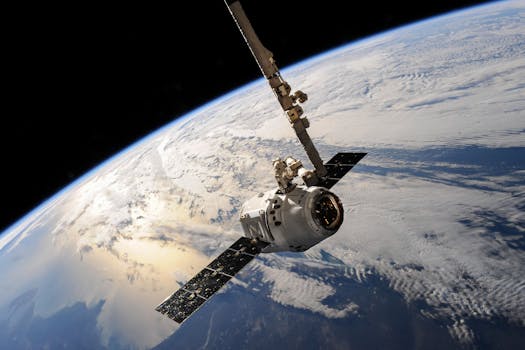
The Sky’s the Limit: How Advanced Satellites are Redefining Communication and Observation
Satellite Communication and Observation are at the forefront of technological advancements, transforming the way we communicate and observe the Earth. The sky’s the limit, as advanced satellites are being launched into space, equipped with cutting-edge technology to facilitate global connectivity and monitor the Earth’s surface. In this article, we will delve into the world of satellite technology, exploring its applications, benefits, and future prospects.
Introduction to Satellite Technology
Satellite technology has come a long way since the launch of the first artificial satellite, Sputnik, in 1957. Over the years, satellites have evolved to become an integral part of modern communication and observation systems. Today, there are thousands of satellites in orbit, providing a range of services, including telecommunications, navigation, weather forecasting, and Earth observation. The development of advanced satellites has been driven by the need for faster, more reliable, and cost-effective communication and observation systems.
Applications of Satellite Technology
Satellite technology has numerous applications, transforming the way we live, work, and interact with each other. Some of the key applications of satellite technology include:
Satellite communication provides global connectivity, enabling people to stay in touch with each other, regardless of their geographical location. This has been particularly beneficial for remote and underserved communities, where traditional communication infrastructure is limited or non-existent.
Satellites play a critical role in navigation, providing location information and timing signals for GPS, GLONASS, and other satellite navigation systems.
Weather forecasting relies heavily on satellite data, which provides vital information about atmospheric conditions, cloud patterns, and storm systems.
Earth observation satellites monitor the Earth’s surface, providing valuable insights into climate change, deforestation, and natural disasters.
Benefits of Advanced Satellites
Advanced satellites offer numerous benefits, including improved communication and observation capabilities, increased efficiency, and reduced costs. Some of the key benefits of advanced satellites include:
High-speed communication: Advanced satellites can transmit data at speeds of up to 100 Gbps, enabling fast and reliable communication.
High-resolution imaging: Advanced satellites can capture high-resolution images of the Earth’s surface, providing valuable insights into climate change, deforestation, and natural disasters.
Increased efficiency: Advanced satellites are more efficient, requiring less power and resources to operate, which reduces costs and environmental impact.
Improved navigation: Advanced satellites provide more accurate location information and timing signals, enabling improved navigation and precision agriculture.
Conclusion
In conclusion, advanced satellites are redefining communication and observation, enabling global connectivity and monitoring of the Earth’s surface. The benefits of advanced satellites are numerous, including improved communication and observation capabilities, increased efficiency, and reduced costs. As technology continues to evolve, we can expect to see even more advanced satellites being launched into space, transforming the way we communicate and observe the Earth. The sky’s the limit, and the future of satellite technology looks bright.